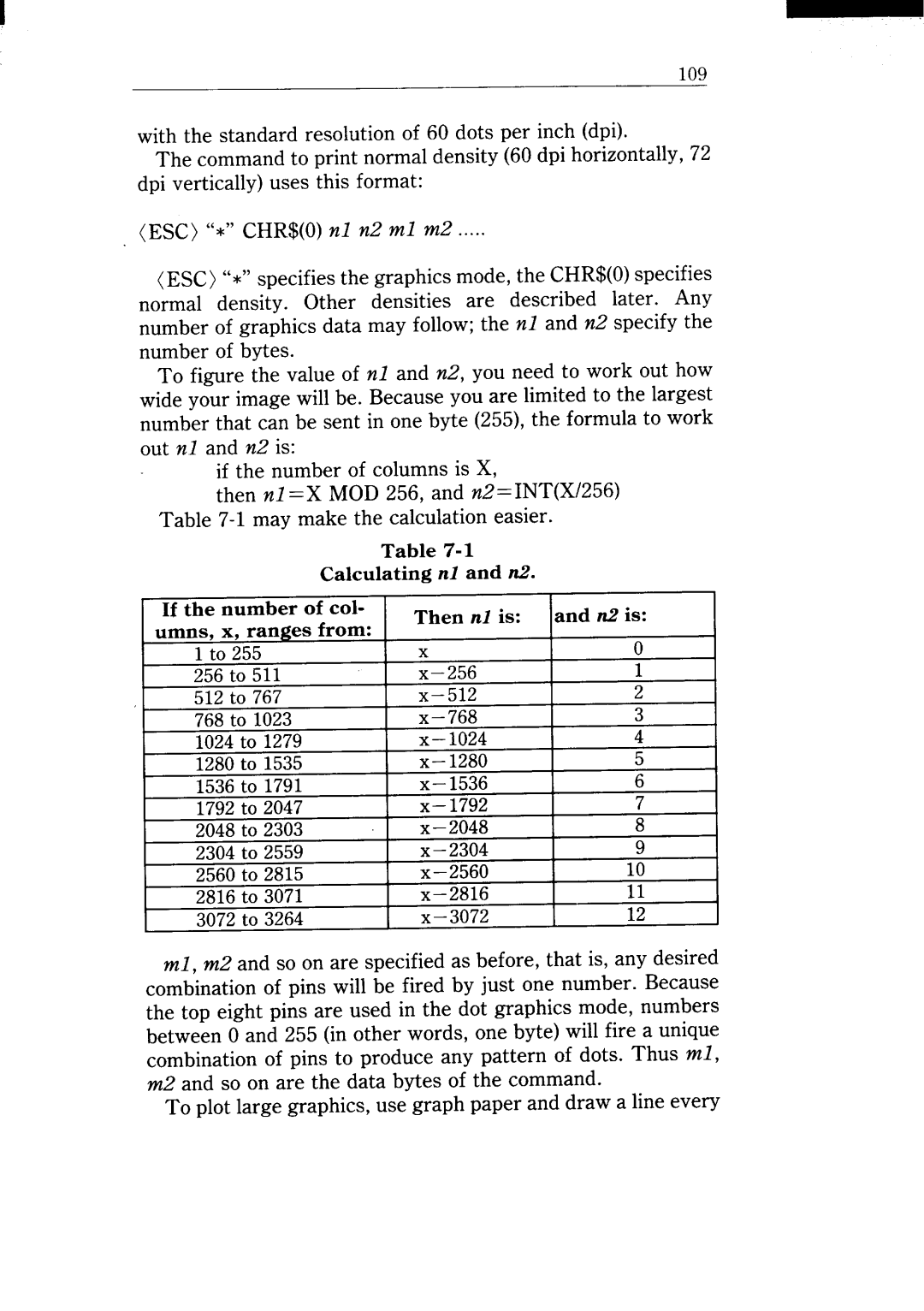
109
with the standard resolution of 60 dots per inch (dpi).
The command to print normal density (60 dpi horizontally, 72 dpi vertically) uses this format:
(ESC) “*” CHR$(0) YZ~7z2ml mz .....
(ESC) “*” specifies the graphics mode, the CHR$(0) specifies normal density. Other densities are described later. Any number of graphics data may follow; the nl and n2 specify the number of bytes.
To figure the value of nl and n2, you need to work out how wide your image will be. Because you are limited to the largest number that can be sent in one byte (255), the formula to work out nl and n2 is:
if the number of columns is X,
then nl =X MOD 256, and n2=INT(X/256) Table
Table
Calculating nl and n2.
If the number of col- umns, x, ranges from:
1 to 255
256 to 511
512 to 767
768 to 1023
1024 to 1279
1536to 1791
I1I~~709 +n 2047
L“ L . .
2048to 2303
mLo....lo LO m) I 1 | |
| ““’34to 2559 |
I | 2815 |
3072to 5L04 | |
| Then nl is: and n2 is: |
| |||
| x |
|
| o |
|
|
| 1 |
| ||
| X– | 512 |
| 2 |
|
|
| 3 |
| ||
| X— | 1024 |
| 4 |
|
| x – | 1280 |
| 5 |
|
| X— | 1536 |
| 6 |
|
| X– | 1792 |
| 7 |
|
,I |
|
| 8 |
| |
.A | ,, |
| |||
|
|
| 9 |
| |
|
|
| 10 |
| |
|
| llc’1,P |
| 11 |
|
|
| LIULU |
|
|
|
| . . | cln79 |
| 19 |
|
I | ii— | au 1L | I | .- | I |
|
|
| |||
ml, m2 and so on are specified as before, that is, any desired combination of pins will be fired by just one number. Because the top eight pins are used in the dot graphics mode, numbers between Oand 255 (in other words, one byte) will fire a unique combination of pins to produce any pattern of dots. Thus ml, m2 and so on are the data bytes of the command.
To plot large graphics, use graph paper and draw a line every
